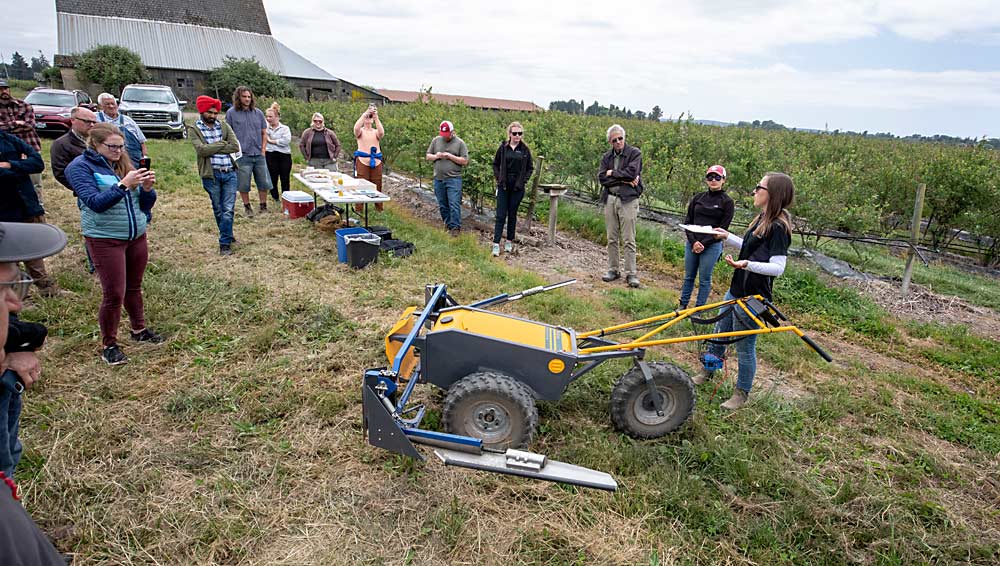
For blueberry growers, better pollination would mean better yields.
But the technology the industry relies on — honey bees — is centuries old and has seen little innovation.
“It’s one of the most archaic parts of our farming,” said Matt Hoffman, Driscoll’s lead for plant health and pollination research and development. “But there are some companies doing some interesting stuff.”
Some of these new technologies were on display during a late-May field day at a Burlington, Washington, farm hosting the BerrySmart Field Project — a U.S. Highbush Blueberry Council-backed effort to test emerging technology in blueberries.
“The goal was to educate growers on our pollination research and showcase some of the technology that was being explored for pollination,” said Lisa Wasko DeVetter, Washington State University associate professor. “We’ve been interested in improving pollination for a long time.”
While hive health challenges have raised concerns for many bee-dependent crops in recent years, blueberries are especially at risk. Wasko DeVetter said growers in Western Washington have found that honey bees don’t perform consistently under the region’s environmental conditions, blueberry flowers are not well-adapted to honey bees in terms of shape and floral nutrition. Some beekeepers find that honey bee health can suffer in blueberry production systems.
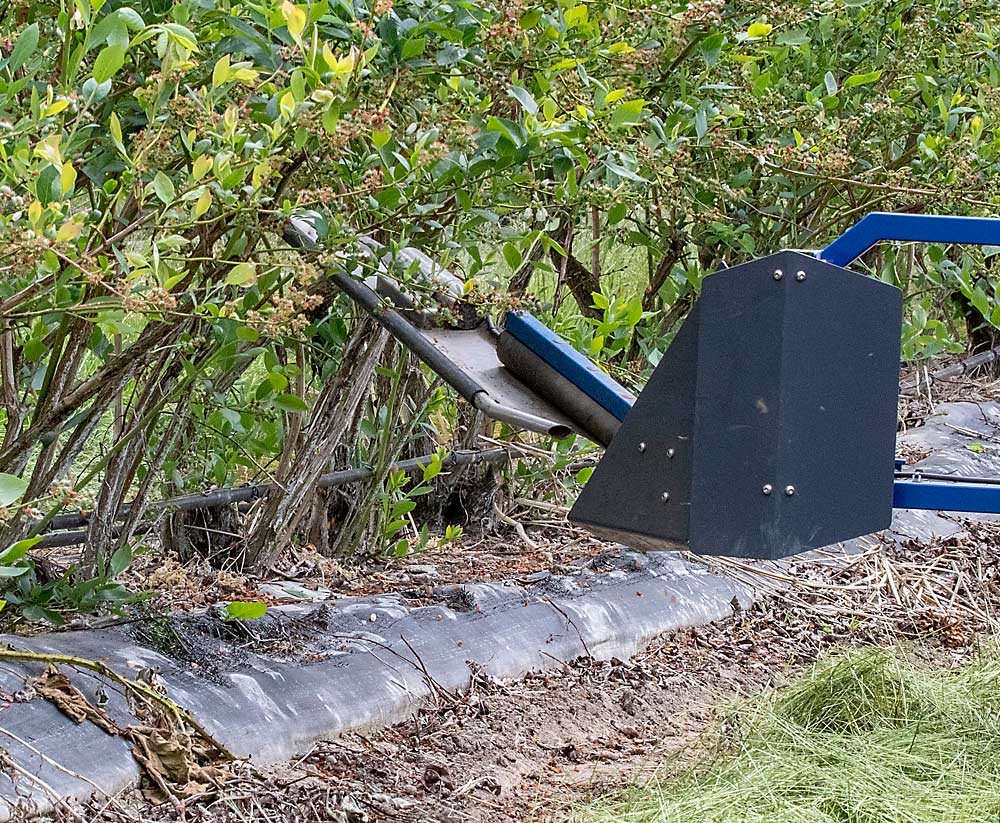
Some of the technologies on display at the field day focused on improving hive health, while one company offered a mechanical pollination option.
BloomX, a California-based ag tech company, designed its Robee to vibrate blueberry flowers and trigger the release of pollen.
“Blueberries have perfect flowers, so all we really have to do is move the pollen in a very localized area within the flower,” Hoffman said. Driscolls’s preliminary trials with the technology — which is modeled off the vibration from a bumble bee, a successful blueberry pollinator — “are looking good.”
WSU also started preliminary trials with the Robee this year and, so far, it seems to effectively trigger pollen release.
“My clothes would be coated in pollen,” Wasko DeVetter said. “But pollen release doesn’t mean it’s going to land on a stigmatic surface.”
More data collection is needed to see how the use of the Robee impacts yield and fruit quality, she said.
In its first generation, the robot bee looks like a lawnmower and requires similar pushing, but the vision is for it to be automated in the future. Pushing the prototype takes about 1.5 hours per acre, Hoffman said.
“From what I have observed, there is a lot of room in our berry crops for improvement of pollination,” Hoffman said. “Every time there is improvement in pollination services, by getting bees more energized or with artificial technology, yield goes up.”
Crop counts
At the BerrySmart sites, imaging technology offers a new way to evaluate the pollination technology trials. Rather than sending students or technicians to count blossoms or berries on a sample of bushes, Steve Mantle uses imaging technology from Green Atlas to scan every row.
“We use it to collect bud, blossom, green berry and preharvest stage counts,” said Mantle, owner of ag data company innov8.ag and the coordinator of the BerrySmart project. “The ability to track this data just wasn’t there before.”
This year, he mounted the camera system on an autonomous rover from Burro. That offers many advantages over the ATV-mounted approach he used in the past few years.
“It’s very helpful to get in and acquire data regardless of a re-entry restriction. And we are able to get into rows you can’t get into with machinery as the season goes on,” Mantle said. “We’ve been very impressed with it.”
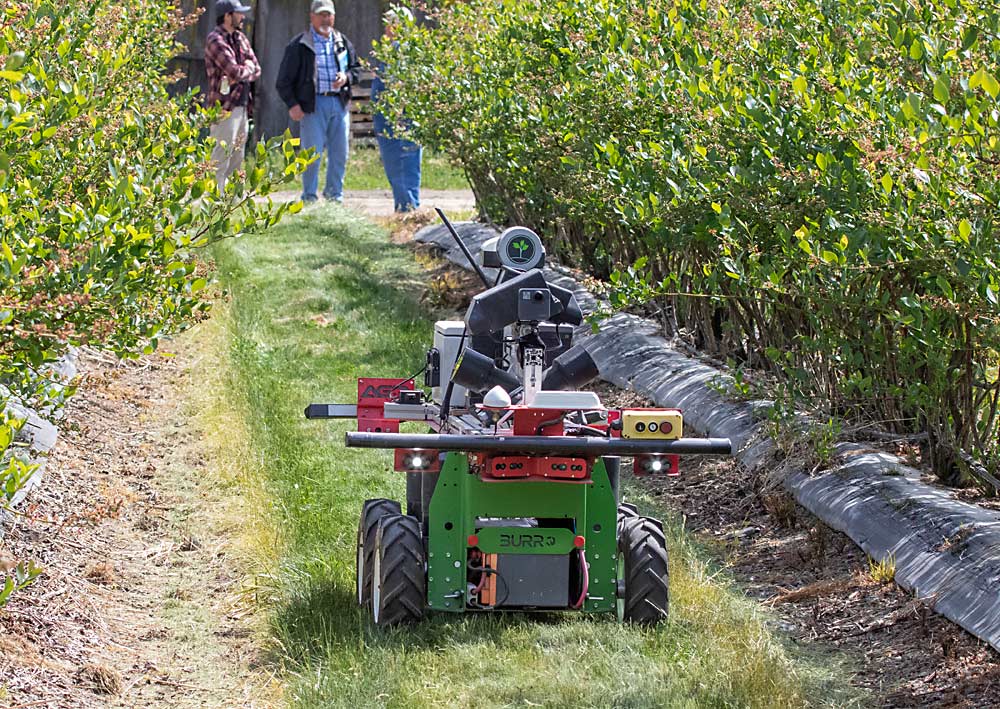
The Burro navigates using its camera systems and needs to be trained to understand its environment before it can operate independently, he said. Young, dormant bushes look very different from mature plantings with a full canopy, so it took a little bit of training time. But now, Mantle said, “we are able to sit in a nice air-conditioned truck while it does its thing for a couple hours.”
He’s using the Burro and Green Atlas technologies to track crop load and vigor at all three BerrySmart sites: the conventionally grown Burlington farm, an organic farm in Burbank, in South Central Washington, and a conventional site in Salem, Oregon.
Bee health
The field day also featured the BeeHome, developed by Israel-based BeeWise. Billed as a smart hive that automates basic beekeeping tasks to sensors and robotic arms, the solar-powered home houses 24 colonies.
“We’re really focused on beekeepers,” and helping them improve hive survival and productivity, co-founder Eliyah Radzyner said at the field day.
This is the company’s first year working in blueberry production systems, he said, and they are eager to learn how the technology could help growers and beekeepers.
“BeeHomes are used for migratory beekeeping, moving from crop to crop as different pollination seasons start, and can be transported on trucks just the same as wooden hives,” said Tai Nicolopoulos, BeeWise’s vice president of marketing. The system uses heat-based treatment chambers to control varroa mite pressure, she said.
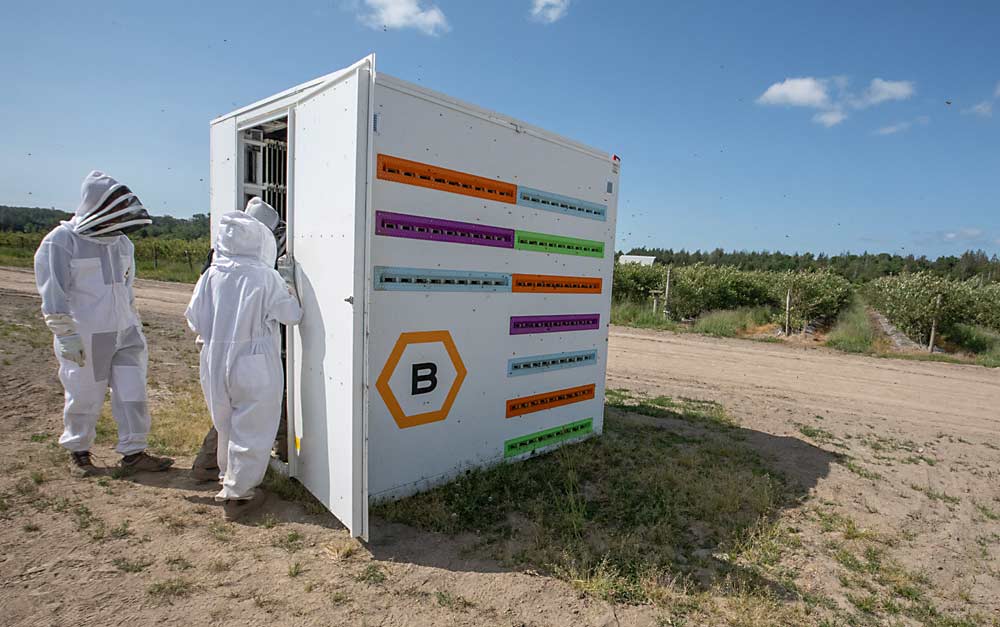
WSU and the BerrySmart project have not yet done trials with BeeWise.
In 2021 and 2022, Wasko DeVetter’s research team did a trial with a different company, Beeflow, that aims to “train bees with floral scents so they are more inclined to forage on these difficult-to-pollinate crops,” she said.
She found that approach resulted in higher berry weight for both Duke and Liberty cultivars, though her team only observed higher honey bee visitation in Liberty. Though “promising,” she thinks an economic analysis is needed to see if the technology would improve growers’ profits.
At this point, it’s an open question as to how these tools could fit into the long-standing relationships between beekeepers and their grower customers.
“If any of these technologies can put less stress on bees and lead to healthier hives, that’s good for the beekeeper and the grower,” Mantle said.
For more on the BerrySmart project visit: ushbc.blueberry.org/for-growers/berrysmart.
—by Kate Prengaman

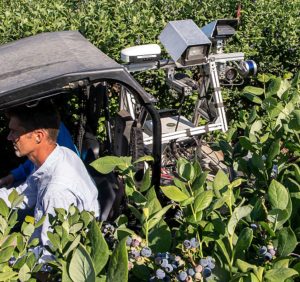





Leave A Comment